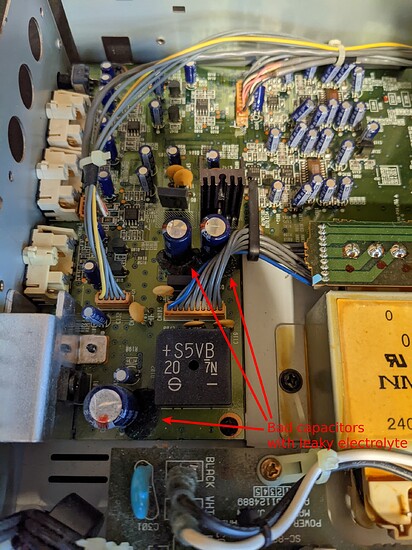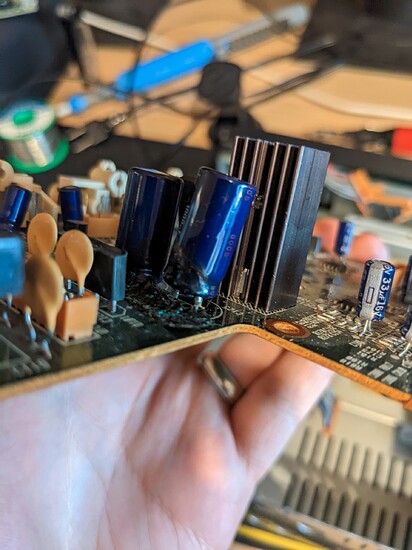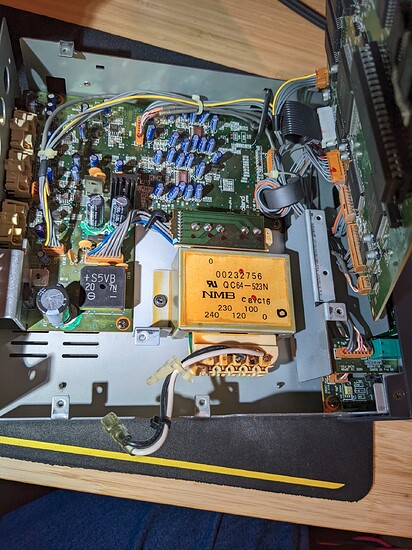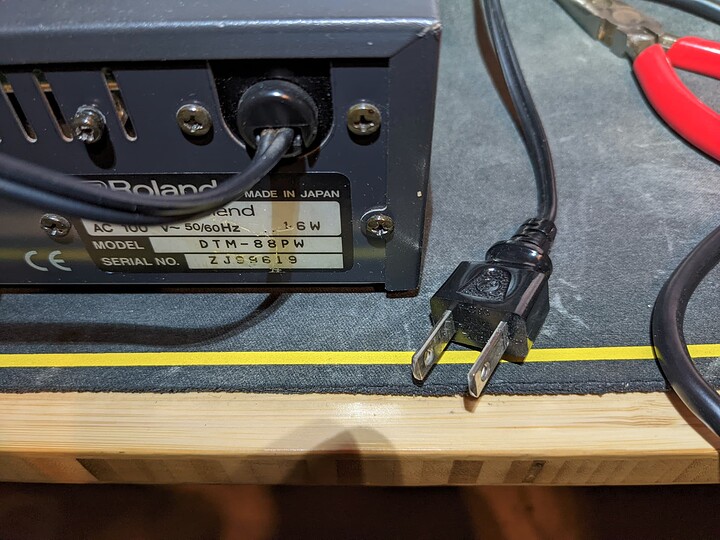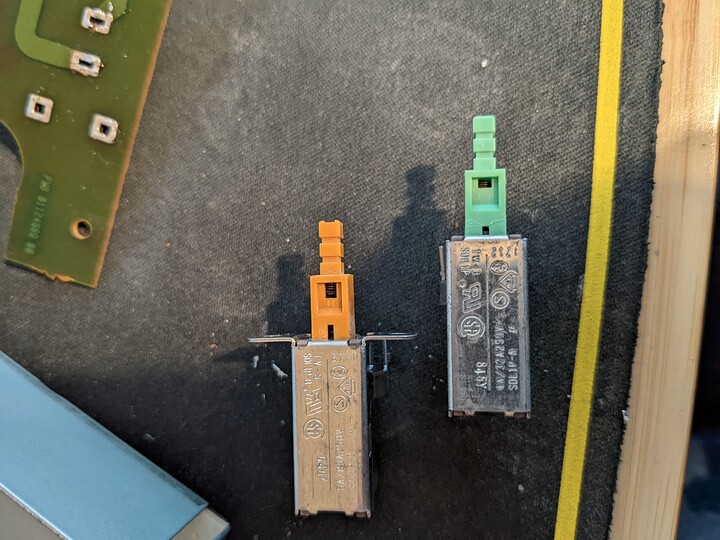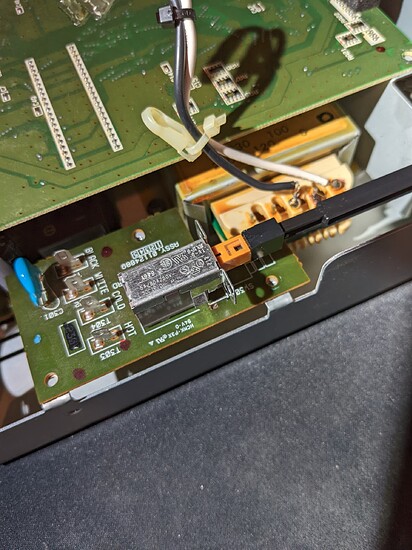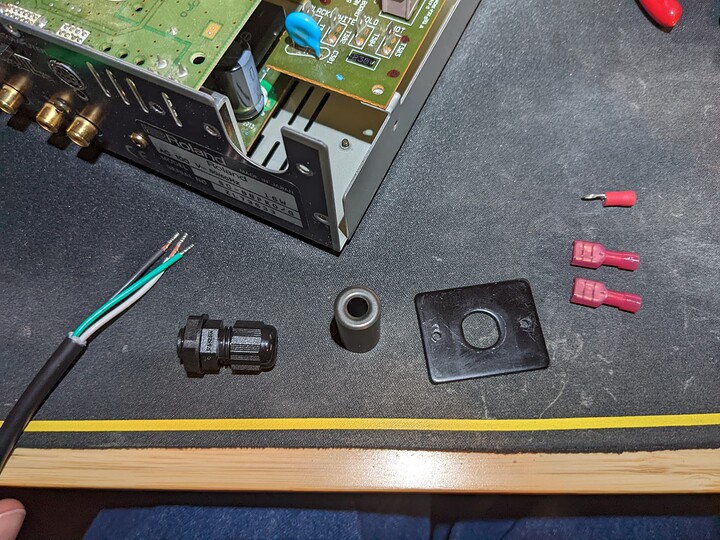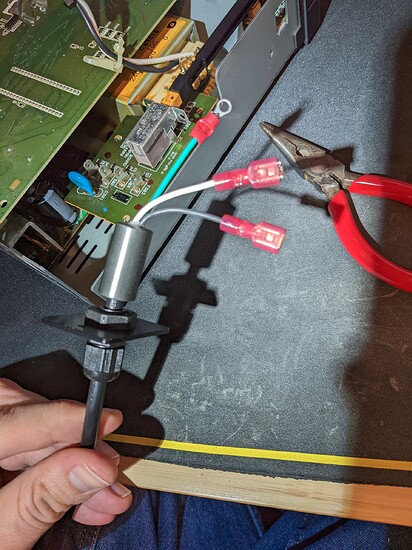I have a couple of these Roland Sound Canvas SC-88 Pro MIDI sound modules. The Sound Canvases were used back in the 90s by many sound designers and composers to make a lot of the MIDI game music that was in many of the video games of that time period, and they can also be used with MIDI controller keyboards as well as computers playing MIDI files to access their hundreds of sounds onboard. However, I had an issue with one of my units, that when I plugged it in and turned it on, I heard a low humming noise coming from the output, in addition to any music generated by the device. It was annoying enough to prevent enjoyment of listening to the music output, so because of this, I decided to open it up and see what was going on.
I intuitively knew it sounded similar to a 60hz humming frequency (or one of its harmonics), so I knew the problem was likely around the power supply area. That’s the first place I looked, and sure enough this is what I found:
I immediately noticed the puddles of electrolyte goo underneath the large filter capacitors that are supposed to be smoothing the 60hz ripples out of the rectified DC voltage. A closer inspection revealed one of the smaller capacitors in the middle of the above picture had even corroded through its leads and almost completely pulled out of the socket without de-soldering:
I ordered some high-quality Rubycon caps made in Japan from Digikey, and I was able to desolder the old caps and clean up the electrolyte mess with isopropyl alcohol, fortunately without stripping traces off the circuit board, and then install the fresh new caps in their place:
This particular Sound Canvas originally hails from Japan, where it’s designed to be used with 100V mains voltage. There are a couple issues with that on this particular unit. First of all, the line cord is an unpolarized, ungrounded NEMA style plug:
The power cord also works in North America on 120V mains voltage, but the transformer inside the unit has various taps on the primary side for different voltages, and originally the unit was using the 100V tap. Since the secondary is supposed to put out 12V, I think because of using this in North America, it was causing higher voltages on the secondary, and possibly make the regulator and filter capacitors work harder and possibly contributing to the failure of the caps. I decided to desolder the hot lead coming from the main power switch from the 100V tap and move it to the 120V tap to match my normal supply voltage here in the USA.
When I was originally disassembling the board, I accidentally broke the plasic plunger of the power switch. I ordered a couple new switches of this style, but they shipped from China and were going to take a while to arrive, so I decided to try to fix the original switch just to get it working again. I was able to painstakingly take it apart and superglue the plunger back together, but the switch was a bit mushy, even though it did work ok. The new switches arrived faster than I thought they would originally, so I went ahead and replaced it since it had a much cleaner feel to it:
Next, I went about replacing the line cord. I wanted something that was grounded for safety reasons, and to absolutely ensure that I would never come across any line voltage on the chassis of the unit if there was ever some sort of component failure inside the unit, as well as to make sure the hot side was the side that got disconnected by the power switch. I also ordered a new strain relief, ferrite bead to keep high frequencies off the line cord, and some new crimp connectors that mated with the existing connector tabs:
I secured the new ground ring connector to one of the chassis screws underneath the power switch circuit board:
The unit turned on and the humming noise was completely gone!
Here’s the rear of the unit with the new line cord and strain relief:
I’m very happy with how this unit turned out. I got rid of the annoying humming noise, and I got duplicate parts for everything so I may do the same thing with my second unit.
